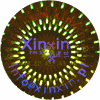
Magnet Fishing in Poland 2025: Is it legal and which magnet to choose to start? Guide
Many people start magnet fishing as a hobby, but the first problems usually appear very quickly – related to legal consent, safety, or poorly chosen equipment. This guide explains the current legal situation in Poland and helps you choose the right magnet to avoid common beginner mistakes.
In practice, most problems appear during the first few outings – usually due to missing consent, a poorly chosen rope or an overly strong magnet that gets stuck permanently. That is why understanding the legal framework and selecting the right equipment (F200, F300 or F550) is more important than the declared lifting force alone.
Extraordinary power of neodymium
Is magnet fishing legal in Poland? (Status for 2025/2026)
Indeed, magnet fishing is permitted in Poland, but on condition of strict adherence to a few principles. The key is the distinction between "seeking monuments" and "clearing the bottom of scrap". In accordance with the Act on the Protection of Monuments and Guardianship of Monuments, conscious searching for monuments without permission from the Provincial Conservator of Monuments (WKZ) is prohibited. However, if your goal is amateur clearing of waters from scrap, you must possess only the consent of the manager of the area/water. Most important safety rule: When you fish out an object that looks antique (old weapon, coins) or threatening (unexploded ordnance), you must instantly stop searching and inform appropriate services (sappers). Do not bring such items home!
Where can throw a magnet? Consent table
Many beginners make a mistake throwing a magnet "wherever". Waters in Poland have their owners. The table below will help you avoid problems:
| Water Type | Manager / Owner | Required Consent / Status |
|---|---|---|
| Rivers, Canals, Dam reservoirs | Wody Polskie | Consent is required. An application for consent to "extract waste from the bottom" must be submitted. |
| Lakes and ponds of PZW | Polish Angling Association | Consent of the tenant (specific PZW circle) is required. Fishing card does not entitle to magnet fishing. |
| Private ponds | Private person | Oral or written consent of the area owner is sufficient. The safest option for the start. |
| Port areas, military, national parks | State Treasury | Absolute ban. Risk of high fines and confiscation of equipment. |
Which magnet to choose? F200 GOLD, F300 GOLD or F550?
In our experience, the biggest differences between magnets become visible only during real use, not in catalog specifications. Our flagship models from the GOLD series are distinguished by original golden hologram, which is a guarantee that you are buying a product with declared power, not a cheap replacement. Here is an overview of the most popular models:
Remember: Models F200 GOLD and F300 GOLD have a specially designed magnetic lens and golden hologram. Model F550 is a class in itself for the most difficult tasks.
Searcher's essentials – what to buy besides a magnet?
The magnet itself is not everything. So that your expedition does not end with losing equipment in silt, you need a set of accessories. At dhit.pl we recommend:
| Accessory | Why is it necessary? |
|---|---|
| Polypropylene Rope | Must be static (non-stretching), non-absorbent and have min. 6-8 mm thickness. Ordinary string will break at a jerk of a snag. |
| Threadlocker | Key element! The magnet eye likes to unscrew from vibrations. A drop of glue on the thread is the cheapest insurance against losing the magnet. |
| Protective gloves | Protect hands from cuts by rusty scrap, glass, fishing hooks and sharp edges of pulled out items. |
| Bucket/Container | For finds and rubbish. A good searcher always leaves the fishery cleaner than he found it! |
OHS: How to safely use magnets F300 and F550?
Neodymium magnets, especially powerful models like F300 GOLD or F550, are not toys. Two such magnets colliding with each other can easily crush a finger. Always use gloves and keep special caution when manipulating the magnet near large metal surfaces (bridges, barriers).
Tip from dhit.pl: Never wrap the rope around your wrist or belt during a throw. If the magnet catches on something (e.g. a flowing log), it can pull you into the water. Use a safe knot (e.g. figure eight) and always check the condition of the rope before the expedition.
Summary: Bet on quality with the GOLD hologram
Magnet fishing combines physical activity with responsibility for safety, legality and proper equipment selection. Beginners should focus less on declared lifting force and more on consent, accessories and realistic use conditions. Choosing magnets with verified parameters helps avoid unnecessary losses and dangerous situations during the first outings.
Most frequently asked questions

Source:
Tags:
czwartek 2025-12-11T12:00:00

